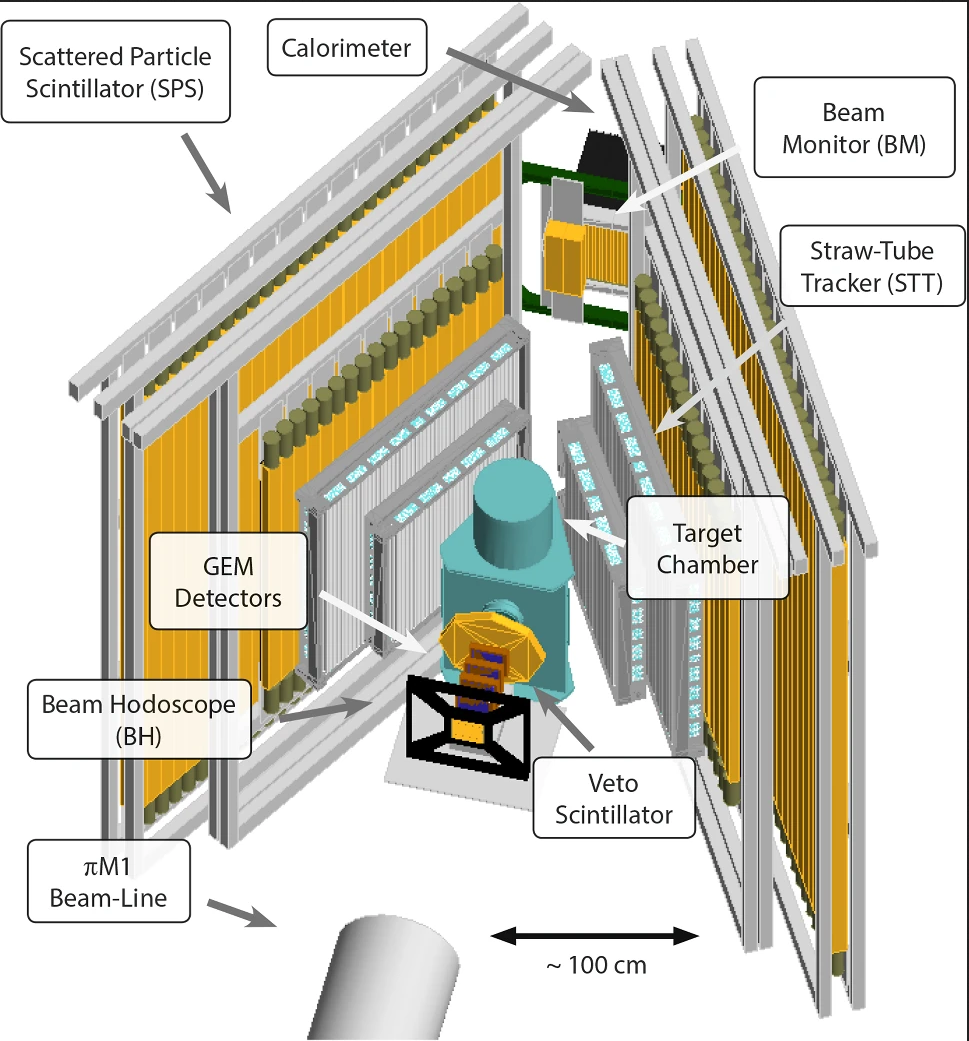Cover Article: Instrumental uncertainties in radiative corrections for the MUSE experiment
Dr. Bernauer, an assistant professor in our department, along with collaborators,
have published a paper in the EPJA that has been selected as the cover article, increasing the visibility of this important
work!

A sketch of the MUSE experimental set-up at the Paul Scherrer Institute in Switzerland.
The MUon proton Scattering Experiment (MUSE) based in Switzerland has made significant headway in accurately measuring the size of protons -- positively charged particles at the heart of any atom. The MUSE experiment measures the proton radius through scattering muons -- particles that behave almost like electrons, except that they are almost 200 times heavier!
The particle beam the MUSE experiment uses for its scattering measurements contains a mix of electrons, muons, and pions, a different type of subatomic particle. The incident particles bass through various detectors for timing measurements and to identify which particles are which. They then collide with the target and scatter. The distribution of the scattering particles gives us information about the size of the target particles -- namely, the size of the proton!
The article published by Dr. Bernauer's group and collaborators investigates the uncertainty in the experimental measurements arising from radiative corrections to the cross section of the proton (a measure of its size). This correction factor accounts for higher-order effects typically neglected in simple calculations. One such source for radiative correction comes from a process known as bremsstrahlung -- or "braking radiation" that is emitted when the incident particles are deflected by the target particles. The article shows that the uncertainties in resulting measurements from electron scattering are less than 1%, while for those involving muons they are negligible -- heavier incident particles are deflected less, and so contribute less of these radiative corrections.
The published article may be found here, and the journal issue for which this article is the cover may be found here.
